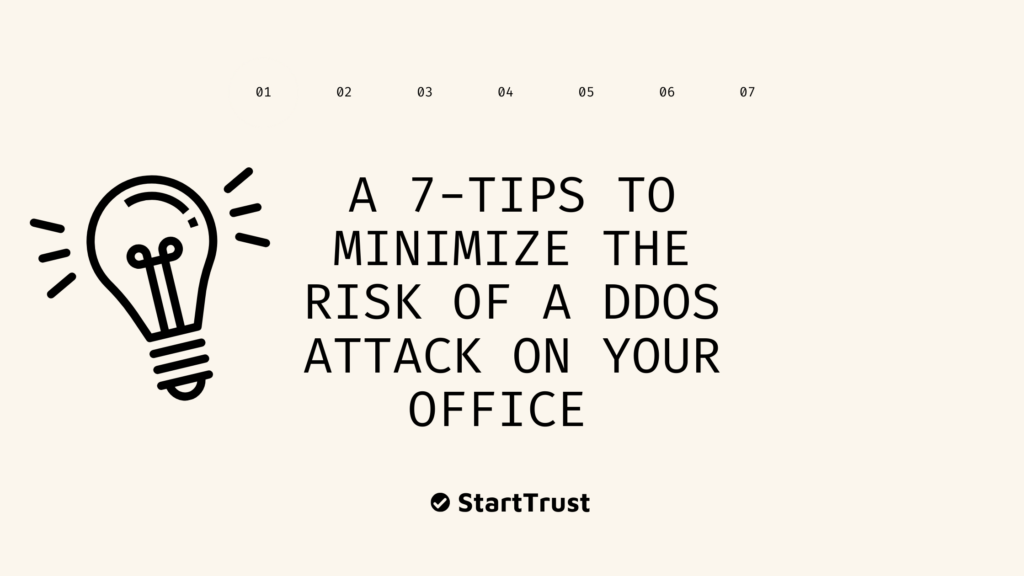
As businesses increasingly rely on the internet to operate, one major threat that continues to grow is the Distributed Denial of Service (DDoS) attack. A DDoS attack can overwhelm your website or servers with excessive traffic, rendering them inaccessible to legitimate users. The consequences can be devastating—lost revenue, damaged reputation, and disrupted operations. However, with the right precautions, you can minimize the risk and keep your business secure. Here are seven essential tips to help you protect your office from a DDoS attack.
1. Invest in a Web Application Firewall (WAF)
A Web Application Firewall (WAF) acts as a barrier between your web applications and the internet. It filters and blocks malicious traffic before it even reaches your servers, effectively mitigating potential DDoS attacks. By screening all incoming traffic, a WAF identifies patterns that indicate harmful activity and stops them in their tracks. This extra layer of protection can significantly reduce the risk of your website being overwhelmed by malicious requests.
2. Use a Content Delivery Network (CDN)
A Content Delivery Network (CDN) helps distribute your website’s content across multiple servers around the world. Instead of all traffic being routed to one server, a CDN spreads the load, making it harder for attackers to target a single point of failure. If one server becomes a target, the traffic can be redirected to other servers in the network, reducing the likelihood of your website going offline due to a DDoS attack.
3. Implement Rate Limiting
Rate limiting allows you to control the number of requests your server will accept from a single IP address. This prevents one user (or bot) from overwhelming your system with too many requests in a short period of time. By capping the rate of incoming traffic, you can prevent your server from being flooded by high-volume attacks, significantly reducing the chances of a DDoS attack succeeding.
4. Enable DDoS Mitigation Tools
Many hosting providers now offer built-in DDoS mitigation tools. These services automatically detect and block malicious traffic before it can harm your website. Some providers even offer advanced tools that can detect sophisticated attack patterns and respond in real time. Enabling these protections is a simple and cost-effective way to strengthen your defenses and ensure your website remains available, even under attack.
5. Regularly Update Software
One of the easiest ways for hackers to exploit your systems is through outdated software. Vulnerabilities in older versions of servers, firewalls, and other infrastructure components can be exploited by attackers to launch DDoS attacks. Make sure to regularly update all of your systems to the latest versions and apply security patches promptly. This ensures that known vulnerabilities are patched, reducing the chances of a successful attack.
6. Monitor Traffic in Real-Time
To catch a DDoS attack in its early stages, you need to monitor your network traffic in real-time. Monitoring tools can alert you to unusual traffic patterns, such as sudden spikes or traffic coming from suspicious locations. By identifying these signs early, you can activate your defense mechanisms and stop the attack before it causes significant damage. Real-time monitoring is essential for preventing a small issue from turning into a major disruption.
7. Have a Response Plan
Even with all the preventative measures in place, it’s essential to have an incident response plan in case an attack occurs. Your team should know exactly what to do if your business comes under a DDoS attack, from contacting your hosting provider to rerouting traffic and communicating with customers. Having a clear plan ensures that your team can act quickly and minimize the impact of an attack, reducing downtime and restoring normal operations as soon as possible.
Conclusion: Don’t Wait for Disaster to Strike
DDoS attacks are a serious threat to businesses of all sizes, but by implementing these seven strategies, you can greatly reduce the risk. Investing in proper defenses like WAFs, CDNs, and real-time monitoring, along with regular software updates and a solid response plan, will help you stay resilient in the face of cyberattacks. Take action now to protect your website and keep your business running smoothly, even when the bad actors strike.